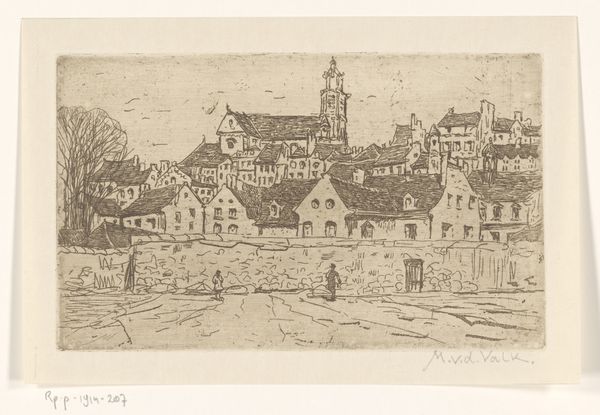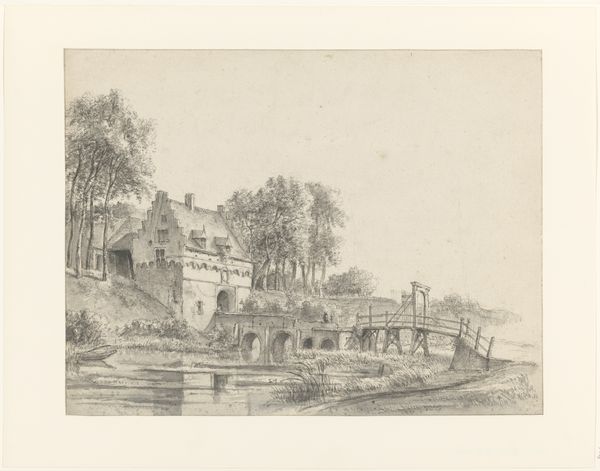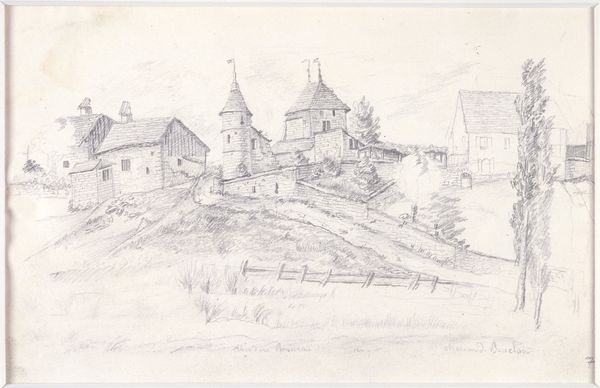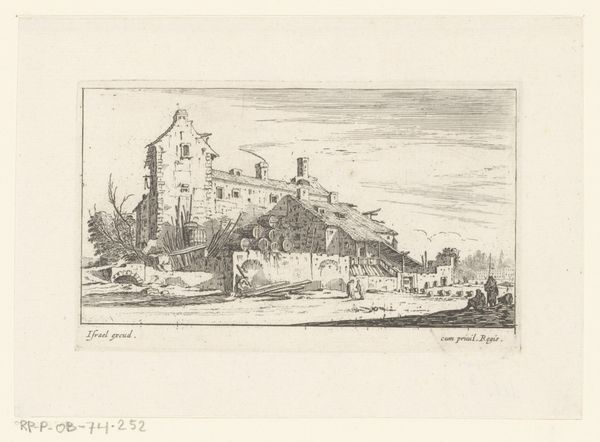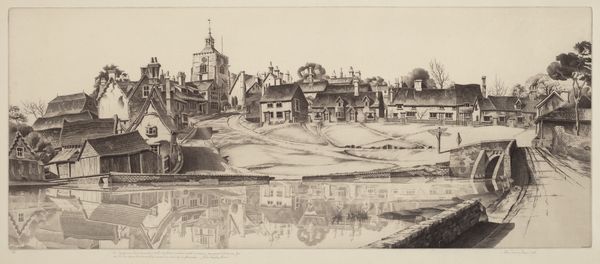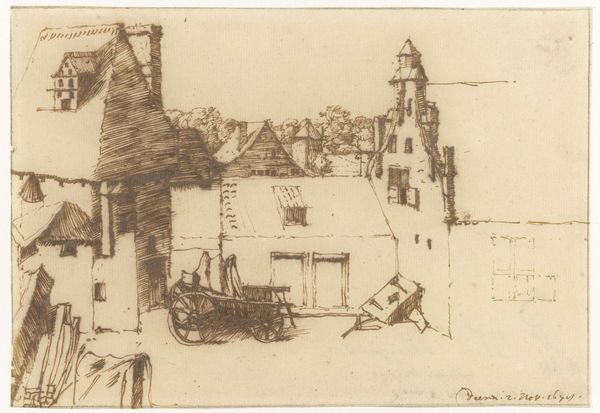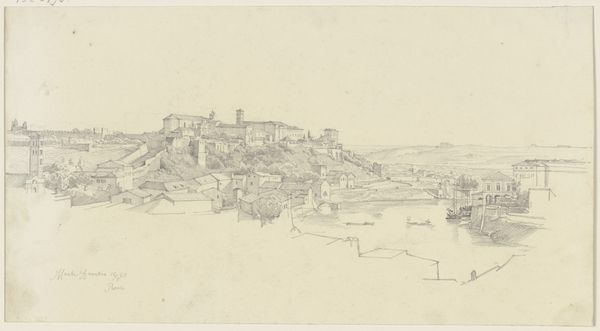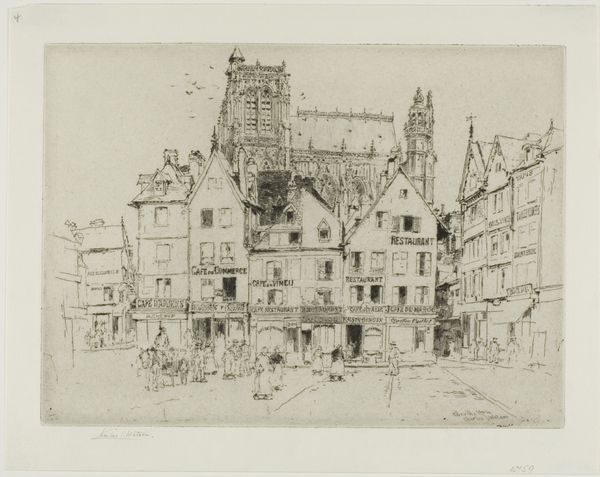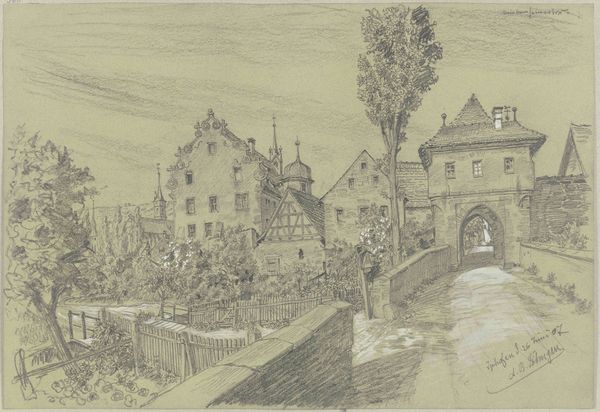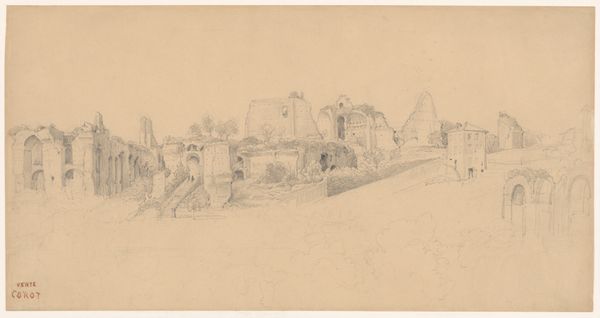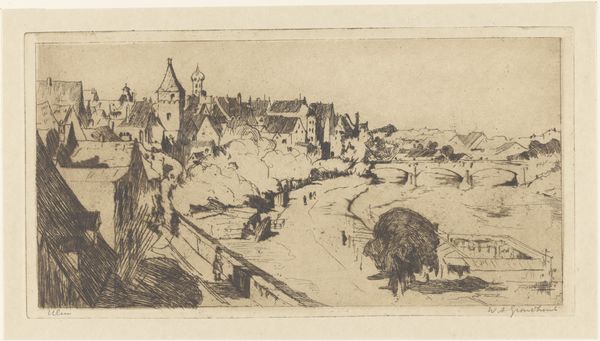
drawing, print, etching, ink, pencil
#
drawing
# print
#
etching
#
landscape
#
ink
#
pencil
#
cityscape
#
realism
Dimensions: plate: 13.34 x 20 cm (5 1/4 x 7 7/8 in.) sheet: 19.84 x 27.46 cm (7 13/16 x 10 13/16 in.)
Copyright: National Gallery of Art: CC0 1.0
Curator: This is "The Old Order," an etching created by John Taylor Arms in 1948. Arms was renowned for his meticulous detail, often capturing architectural landmarks with incredible precision. Editor: The density of line work is just stunning. I'm immediately struck by how compact everything is—a warren of buildings ascending the gentle slope. It evokes a very grounded, settled feeling. Curator: Indeed. Arms produced this print well after World War II. Consider how notions of tradition and stability might have resonated with audiences, particularly within the context of post-war reconstruction and a collective desire for order. Editor: Absolutely. There's a compositional balance that reinforces this idea. The low bridge grounds the scene while drawing the eye upward toward the dominant church, but all the rooftops seem nearly stacked—reminiscent of cubist strategies of fragmentation, except filtered through the meticulousness of realism. It’s intriguing, almost unsettling, in its visual thoroughness. Curator: I agree that the image seems to evoke two concepts simultaneously: old and new. Arms often portrayed the timeless qualities of European architecture. "The Old Order" portrays perhaps both resilience and continuity. Editor: Looking at the intricate textures achieved solely through line, I can't help but consider Arms' deep engagement with materiality. His skill with the etching needle allowed him to translate light and shadow into a complex, almost tactile, experience. Curator: It is important to note how Arms' work can be interpreted beyond mere aesthetic pleasure. The etching technique allowed for multiple reproductions, making this image accessible to a wider audience and reinforcing certain cultural values about the built environment. What exactly does society value in perpetuating the idea of an “Old Order?" Editor: I am left considering the inherent tension between the print’s intricate structure and its nostalgic, comforting overall effect. Its formal qualities offer one experience, while its contextual resonance speaks to something entirely different. Curator: I concur, examining "The Old Order" prompts us to think about how we perceive and value tradition during eras of pronounced societal transformation.
Comments
No comments
Be the first to comment and join the conversation on the ultimate creative platform.
